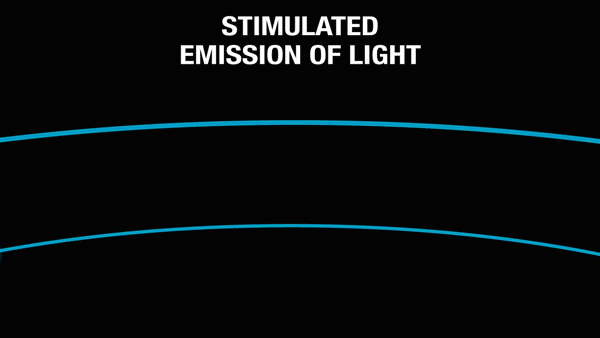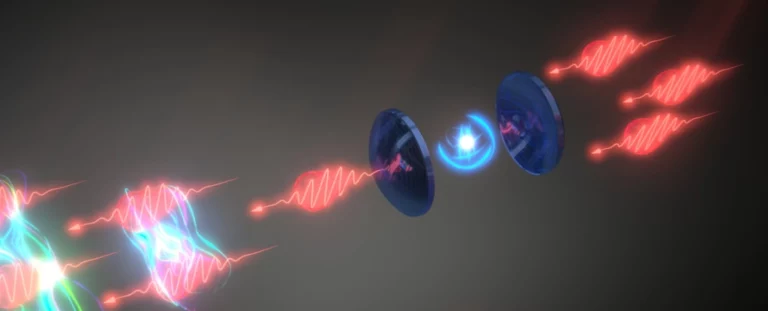In a significant achievement, physicists have successfully manipulated ‘quantum light’ for the first time.
A team of physicists from different countries has accomplished the feat of manipulating small clusters of photons, which have a strong interdependence. This remarkable achievement in the quantum world could open doors to unimaginable technological developments, such as lasers with quantum sensitivity that could be used in medical imaging.
Physicist Sahand Mahmoodian, affiliated with the University of Sydney, states that this achievement could pave the way for quantum-enhanced measurement techniques and photonic quantum computing by enabling the manipulation of what is now called ‘quantum light.’

Although physicists have managed to control quantum entangled atoms, replicating the same process with light has been challenging. In this recent experiment, the researchers from the University of Sydney and the University of Basel in Switzerland fired a single photon and a pair of photons that were tightly bound to a quantum dot (an artificially created atom) and measured a direct time delay between the free photon and the bound ones.
Physicists from the University of Sydney and the University of Basel have made a significant breakthrough in the quantum realm, manipulating small numbers of photons with a strong relationship to each other for the first time. This could potentially lead to advanced technologies in areas such as quantum-enhanced measurement techniques and photonic quantum computing. While controlling quantum entangled atoms has become easier for physicists, controlling light has been more challenging. The team used a quantum dot and stimulated emission to set up a two-photon bound state, observing a time delay between one photon interacting with it compared to two photons. The bound state was induced by strong photon-photon interaction, which made the two photons entangled.
When electrons in an atom’s nucleus are stimulated by an electrical current or light source in a laser, they are elevated to a higher orbit, causing them to become excited. Upon returning to their original state, they release energy in the form of photons. These photons are known as “stimulated” emissions, and are distinguished by their identical wavelengths, unlike the various frequencies (or colors) present in normal white light.

An international team of physicists has made a significant breakthrough in the quantum realm by successfully manipulating small numbers of light particles, known as photons, that are closely related. This groundbreaking achievement could lead to new technologies that we can’t even imagine, such as lasers with quantum sensitivity for medical imaging.
According to physicist Sahand Mahmoodian from the University of Sydney, “This opens the door to the manipulation of what we can call ‘quantum light.’ This fundamental science opens the pathway for advances in quantum-enhanced measurement techniques and photonic quantum computing.”
In contrast to physicists’ success in controlling quantum-entangled atoms, achieving the same thing with light has been more challenging. However, in a recent experiment, a team from the University of Sydney and the University of Basel in Switzerland shot both a single photon and a pair of bound photons at a quantum dot and measured a direct time delay between the photon on its own and the ones that were bound.
” The device we built induced such strong interactions between photons that we were able to observe the difference between one photon interacting with it compared to two,” says physicist Natasha Tomm, the joint lead author, from the University of Basel. “With this really strong photon-photon interaction, the two photons become entangled in the form of what is called a two-photon bound state.”
This bound state is created using stimulated emission, a phenomenon first described by Albert Einstein in 1916 and which forms the basis of modern lasers. A mirror is then used to bounce the old and new photons back towards the atoms, which stimulates more identical photons to be produced. All these photons move in unison, travelling at the same speed and direction, and build up until they overcome the mirrors and the optical medium and blast free in a perfectly synchronized beam of light that can stay sharply focused over long distances.
Although this interaction between light and matter is the foundation of many incredible technologies, such as GPS, computers, medical imaging, and global communications networks, these technologies still require a significant number of photons, which limits their sensitivity. The new breakthrough has achieved stimulated emission and detection for single photons, as well as small groups of photons from a single atom, leading to them becoming strongly correlated, which is referred to as ‘quantum light.’ This development is a major step forward.
Physicist Sahand Mahmoodian from the University of Sydney states that they have taken a crucial first step towards utilizing quantum light for practical purposes by demonstrating the identification and manipulation of photon-bound states. According to Mahmoodian, the next steps are to use the technique to create light states that are more suitable for quantum computing. Natasha Tomm, the joint lead author from the University of Basel, describes the experiment as not only beautiful because it validates a fundamental effect, but also because it represents a significant technological advancement towards more sophisticated applications. Tomm says that the same principles could be applied to develop more efficient devices that generate photon-bound states, which is promising for a wide range of areas, including quantum information processing, advanced manufacturing, and biology.
The research has been published in Nature Physics.
Do not forget to share your opinion with us to provide you with the best posts !




0 Comments